Few things frustrate marketers more than seeing a Facebook ad campaign stall before it even gets started. You’ve spent hours crafting the perfect ad creative, targeted your audience with precision, and allocated your budget carefully—only to find your ad stuck in limbo, not delivering impressions or generating results.
This scenario plays out daily for businesses of all sizes. The culprit is often not your creative or strategy, but rather one of several technical, account-level, or policy-related roadblocks that Facebook’s systems have identified. The good news? Most delivery issues have straightforward fixes once you identify the root cause.
In my experience working with businesses on their social media strategies, Facebook ad delivery problems typically fall into four main categories: account issues, policy violations, technical errors, and optimization failures. Let’s unpack each of these areas and identify practical solutions to get your ads back on track.
Understanding Why Facebook Ads Stop Delivering
Facebook’s advertising system operates like a complex traffic control tower. It manages millions of ads competing for limited space in users’ feeds. When your ad stops delivering, it means this system has flagged an issue requiring attention.
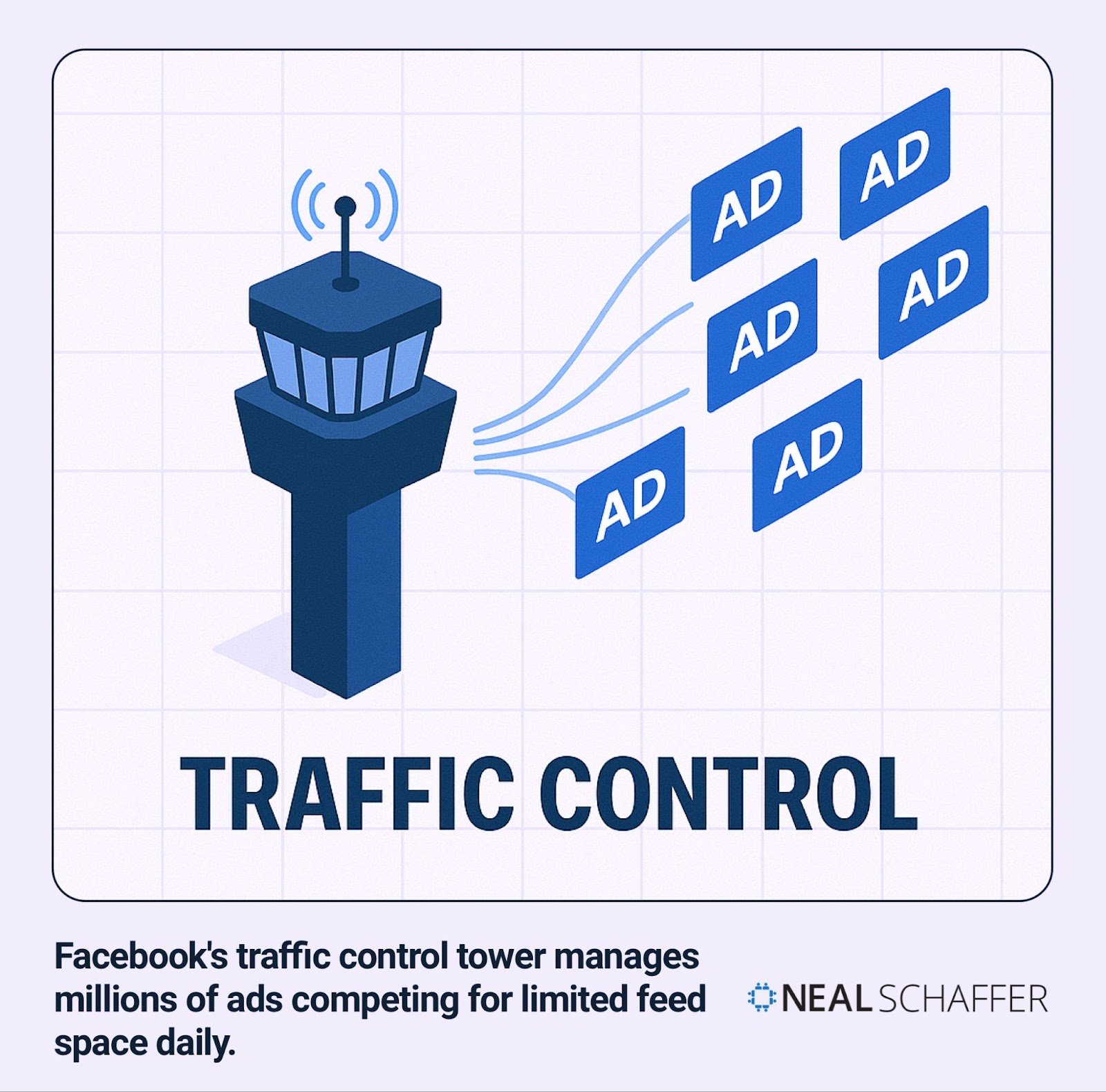
The platform’s delivery mechanism evaluates numerous factors before displaying your ad, including account status, payment method, policy compliance, technical setup, and optimization parameters. A problem in any of these areas can ground your ad campaign before takeoff.
Payment failures (such as expired or declined cards) and ad account restrictions are among the leading causes of sudden delivery stoppages.
Before we dig into specific issues, let’s examine the main categories of delivery problems. This overview will help you navigate to the most relevant solutions for your situation.
| Delivery Issue Category | Common Symptoms | Typical Resolution Time | Business Impact |
|---|
| Account-Level Issues | All ads stopped suddenly | 1-24 hours | High |
| Policy Violations | Specific ads rejected or limited | 24-72 hours | Medium-High |
| Technical Errors | Inconsistent delivery or performance | Variable | Medium |
| Optimization Failures | Poor performance leading to reduced delivery | 3-7 days | Low-Medium |
This table highlights the importance of quickly identifying which category your delivery issue falls into. Account-level problems typically have the highest business impact but can often be resolved quickly. Let’s explore each category in depth.
Account-Level Issues That Halt Ad Delivery
Account-level issues are among the most common and disruptive causes of Facebook ad delivery problems. These affect your entire advertising account rather than individual campaigns or ad sets.
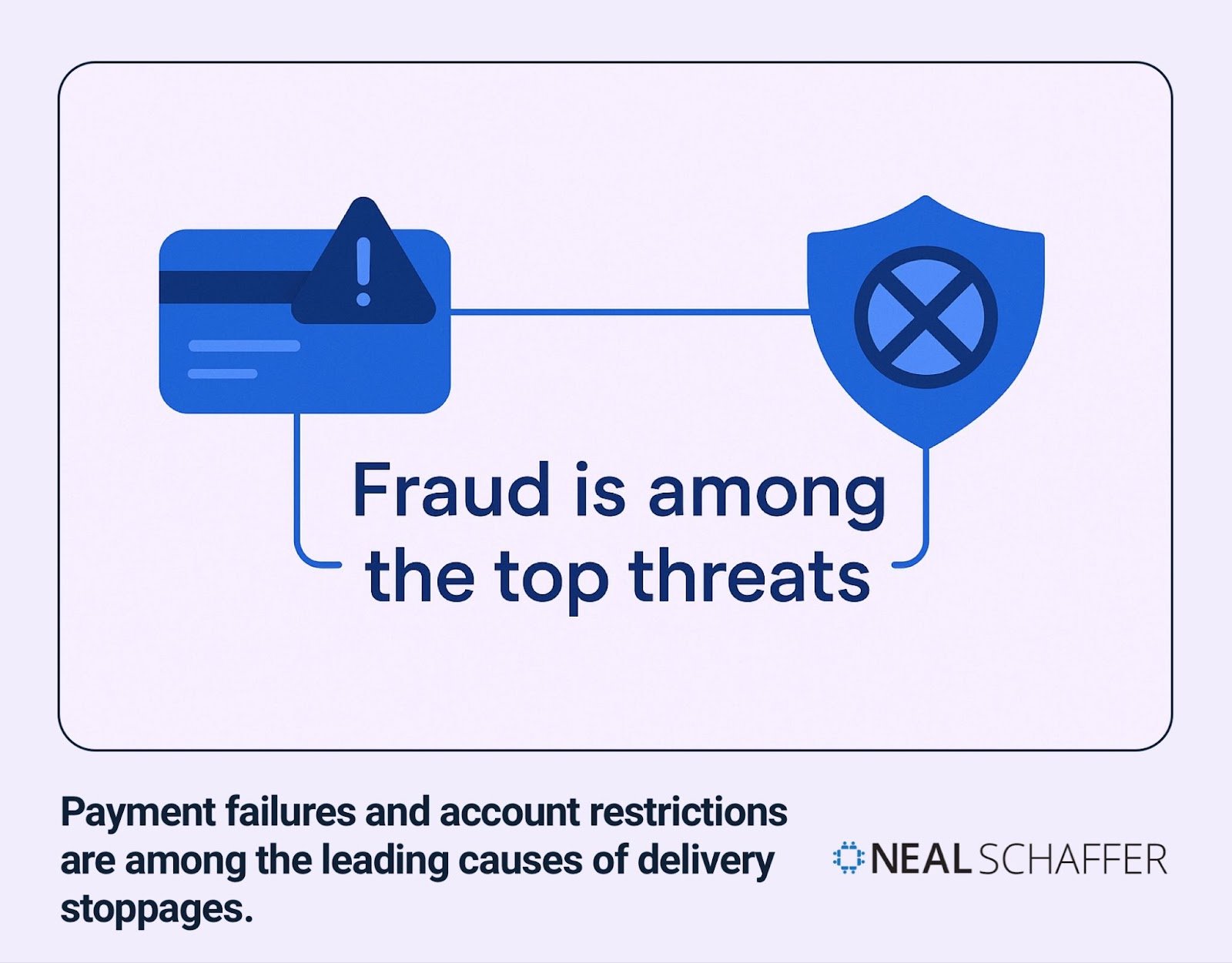
The most frequent account issue is payment method failure. Your ad delivery can stop immediately if your credit card expires, has insufficient funds, or encounters a processing error. Facebook’s systems respond swiftly to payment problems by pausing all active campaigns until the issue is resolved.
Another common account-level roadblock is advertising account restrictions. Meta’s enforcement systems can flag accounts for policy violations, unusual activity patterns, or security concerns. These restrictions can range from temporary limitations to complete account disablement.
Spending limit caps represent a third account-level issue that’s often overlooked. Facebook allows businesses to set account spending limits as a budgetary safeguard. Once reached, all campaigns pause automatically until the limit is reset or increased.
Let me share a real scenario I encountered with a client. Their entire ad account suddenly stopped delivering ads during a critical product launch. After investigating, we discovered their credit card had expired just days before. What makes this situation particularly challenging is that Facebook doesn’t always send clear notifications about payment failures. The solution was straightforward once identified, but the delivery interruption cost them valuable momentum.
Quick Account Status Checks
When your ads stop delivering suddenly, perform these account-level checks first:
- Payment method status – Verify your credit card hasn’t expired and has sufficient funds
- Account restrictions – Check Ads Manager for any account quality warnings
- Spending limits – Confirm you haven’t hit any self-imposed spending caps
- Business Manager status – Ensure your Business Manager account is in good standing
According to Meta’s enforcement policies, maintaining a backup payment method can significantly reduce the risk of payment-related delivery pauses.
Policy Violations That Trigger Ad Rejection
Facebook maintains strict advertising policies designed to ensure quality user experiences and legal compliance. Policy violations represent the second major category of delivery issues, and they can be particularly frustrating because the rejection reasons aren’t always clearly explained.
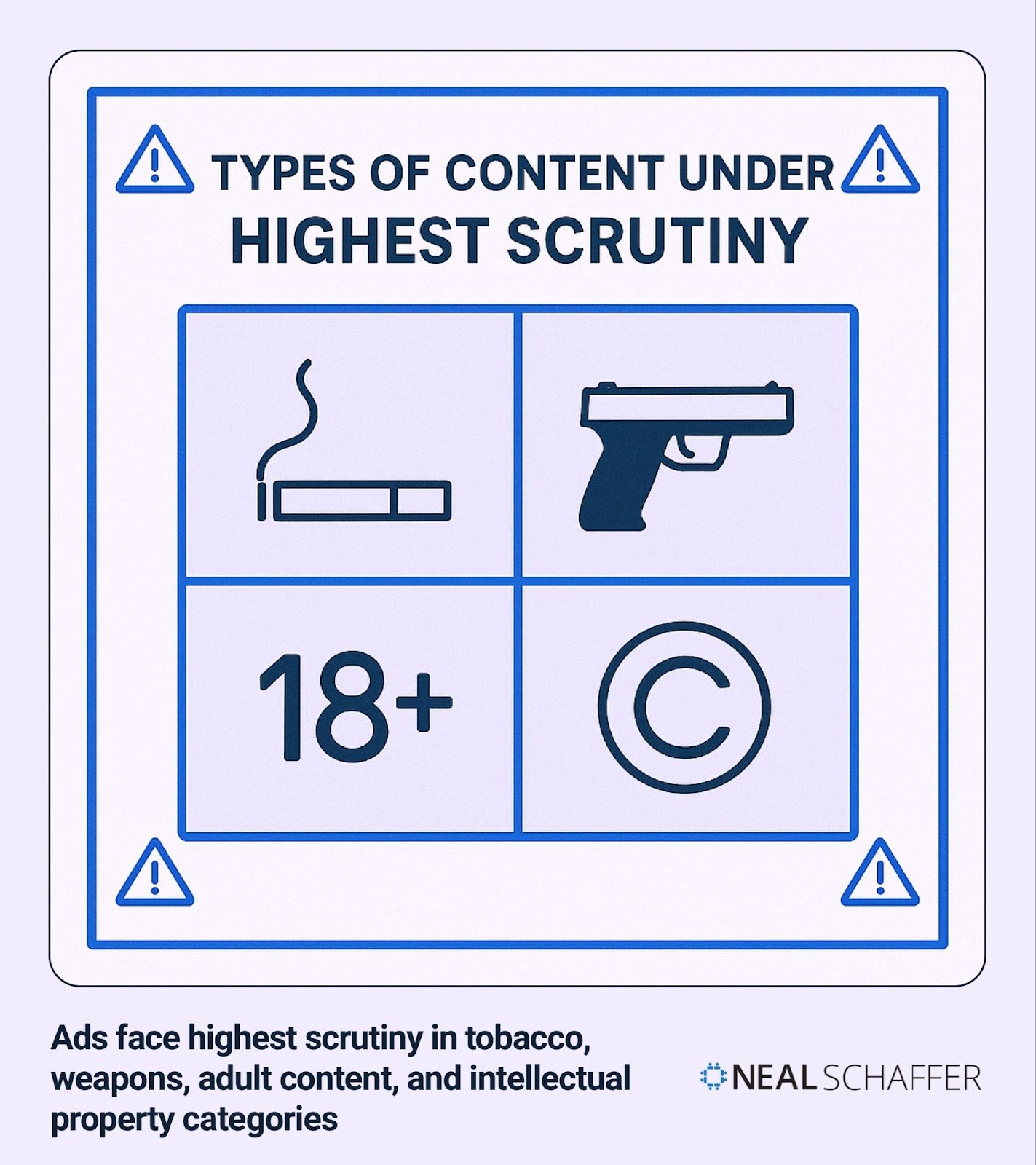
Meta’s policy enforcement prioritizes certain prohibited content categories above others. Ads related to tobacco products, weapons, adult content, and those with intellectual property violations face the highest scrutiny and rejection rates.
Beyond these obvious categories, Facebook’s policies cover many subtle areas that advertisers often miss. Let’s examine the key policy areas that commonly trigger delivery issues:
| Policy Category | Common Violation Examples | Detection Method | Resolution Approach |
|---|
| Prohibited Content | Tobacco, weapons, adult content | Automated + Human Review | Complete revision needed |
| Restricted Content | Alcohol, gambling, supplements | Automated + Human Review | Special permissions or modifications |
| Intellectual Property | Unauthorized brand names, images | Automated + Manual Reports | Obtain rights or remove content |
| Misleading Claims | Unrealistic results, false statements | Human Review | Substantiate claims or modify |
This table shows how different policy violations are detected and addressed. Understanding these categories can help you identify potential issues before submitting ads for review.
Even experienced advertisers can encounter unexpected policy issues. For example, what successful Facebook ads are already doing in your niche can provide insights into how others navigate these policies while maintaining effective campaigns.
Overwhelmed by Digital Marketing?
Just released: my new book to help small businesses, entrepreneurs, and marketers master digital marketing in today’s digital-first world.
Drawing on my Fractional CMO experience, Digital Threads simplifies complex strategies into clear, actionable steps for success.
Transform your business today—grab your copy! Click the cover or button below to buy on Amazon.
It’s worth noting that Meta’s policy enforcement has grown more sophisticated over time. Their systems now look beyond obvious violations to detect subtle policy issues:
Common Non-Obvious Policy Violations
Several less obvious policy violations frequently trip up advertisers:
- Personal attributes references – Statements that imply you know a person’s personal attributes (e.g., “Are you struggling with weight loss?”)
- Before/after imagery – Particularly problematic for health, fitness, and cosmetic products
- Sensationalized language – Excessive use of capital letters, punctuation, or hyperbolic claims
- Landing page mismatches – When your landing page content substantially differs from your ad
When your ads face policy rejections, it’s important to carefully review the specific policy cited in the rejection notice. Sometimes making small adjustments to wording or imagery can resolve the issue without requiring a complete ad redesign.
Technical Reasons Behind Facebook Ad Delivery Problems
Technical issues form the third major category of Facebook ad delivery problems. Unlike account or policy issues, technical problems can be more challenging to identify because they often manifest as performance inconsistencies rather than outright delivery failures.
Platform glitches are acknowledged by Meta’s own developer support channels as occasional causes of ad delivery disruptions. These temporary technical issues can affect ad systems without any changes on the advertiser’s end.
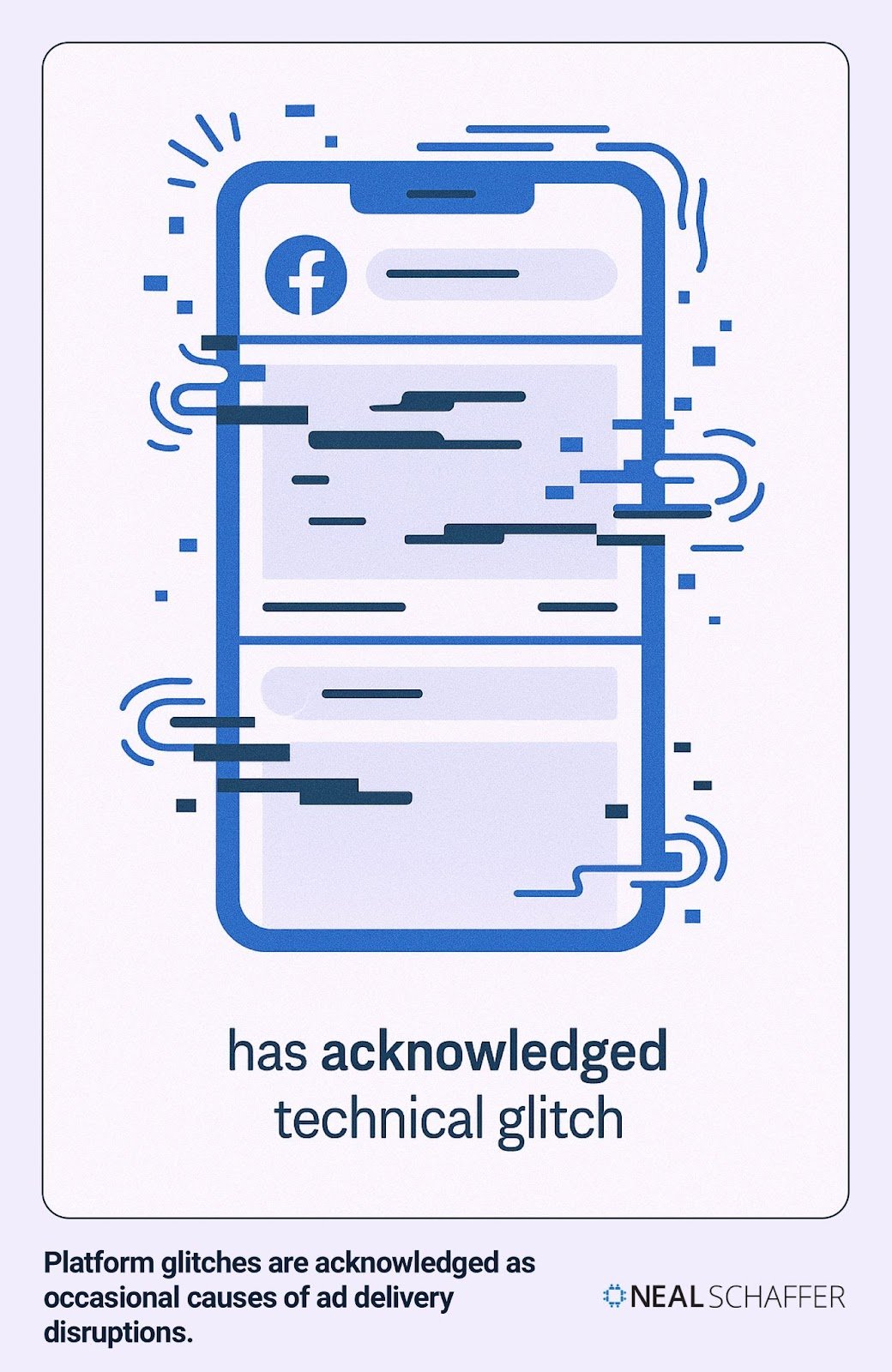
Beyond platform-wide issues, advertisers often encounter technical problems related to their specific implementation. Let’s examine these common technical roadblocks:
Product Feed Errors in Dynamic Ads
For e-commerce businesses using dynamic product ads, feed errors represent a significant delivery challenge. Product feed mismatches are cited as a common failure point that prevents dynamic ads from delivering properly.
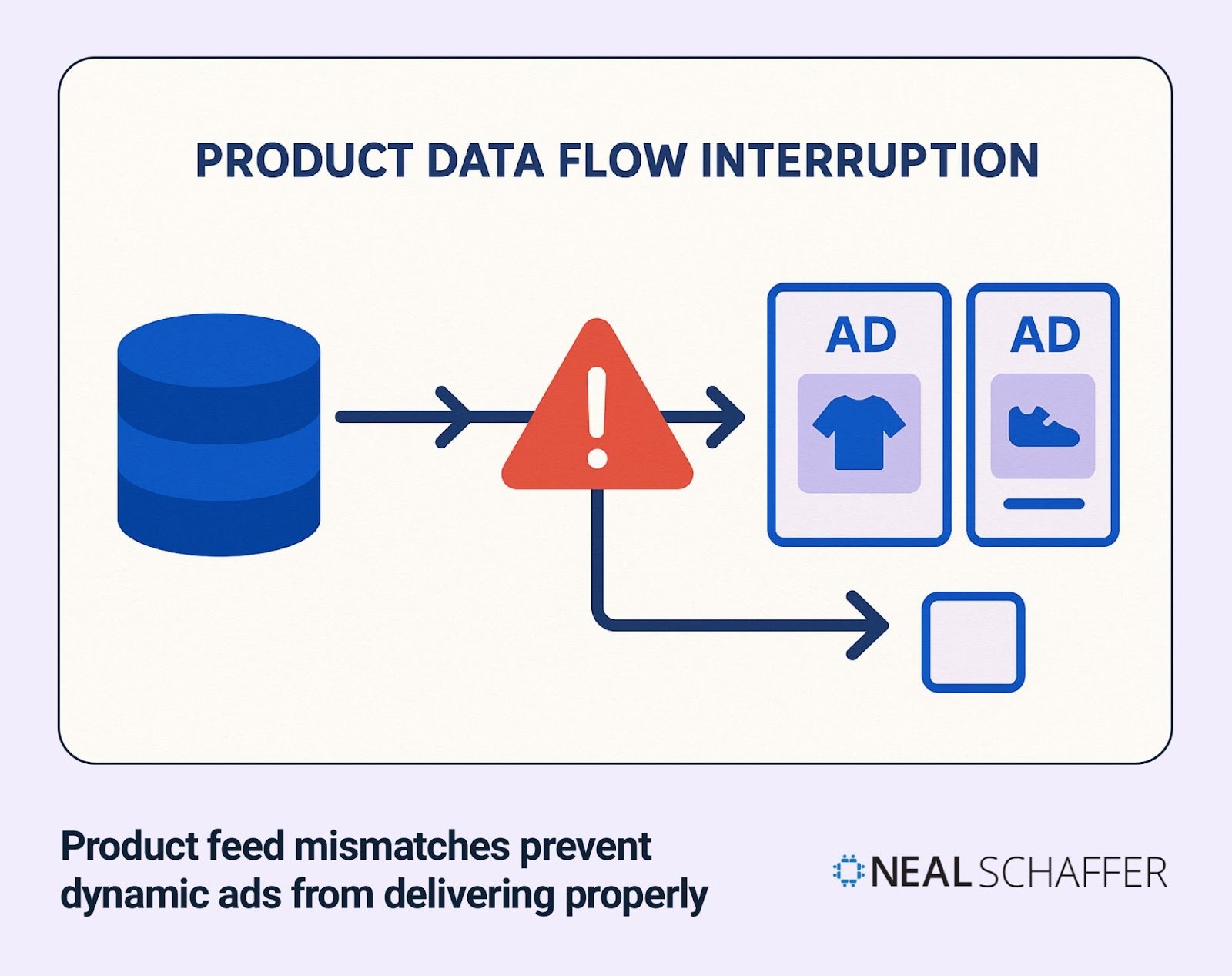
Dynamic ads rely on accurate, well-formatted product catalogs. When your product feed contains errors, missing information, or formatting issues, Facebook’s system may be unable to generate the dynamic elements needed for your ads. This results in partial or complete delivery failure.
Common product feed issues include:
| Feed Error Type | Symptoms | Diagnosis Method | Resolution Approach |
|---|
| Missing Required Fields | Products not approved | Catalog Diagnostics Tool | Add missing fields (ID, price, etc.) |
| Image Quality Issues | Products approved but not serving | Manual Review | Improve image quality/resolution |
| Inconsistent URLs | Click tracking issues | URL Testing Tool | Standardize URL formats |
| Inventory Syncing Failures | Out-of-stock items still appearing | Feed Error Reports | Fix sync schedule or mechanism |
This table outlines the most common product feed issues that affect dynamic ad delivery. For businesses that rely heavily on catalog sales, resolving these technical issues should be a priority.
Beyond feed issues, technical problems can also stem from tracking implementation errors. Facebook’s pixel and Conversions API work together to measure ad performance and optimize delivery. When improperly configured, they can severely limit your ad’s reach and effectiveness.
I’ve worked with clients who were puzzled by their ads’ poor performance, only to discover that their pixel was firing multiple times on the same page, creating duplicate events that confused Facebook’s optimization algorithms. These technical issues aren’t always obvious but can severely impact campaign success.
Optimization Issues That Affect Facebook Ad Delivery
The fourth major category of delivery problems stems from optimization issues. Unlike the previous categories, which often result in immediate delivery stoppages, optimization issues typically cause gradual declines in delivery and performance.
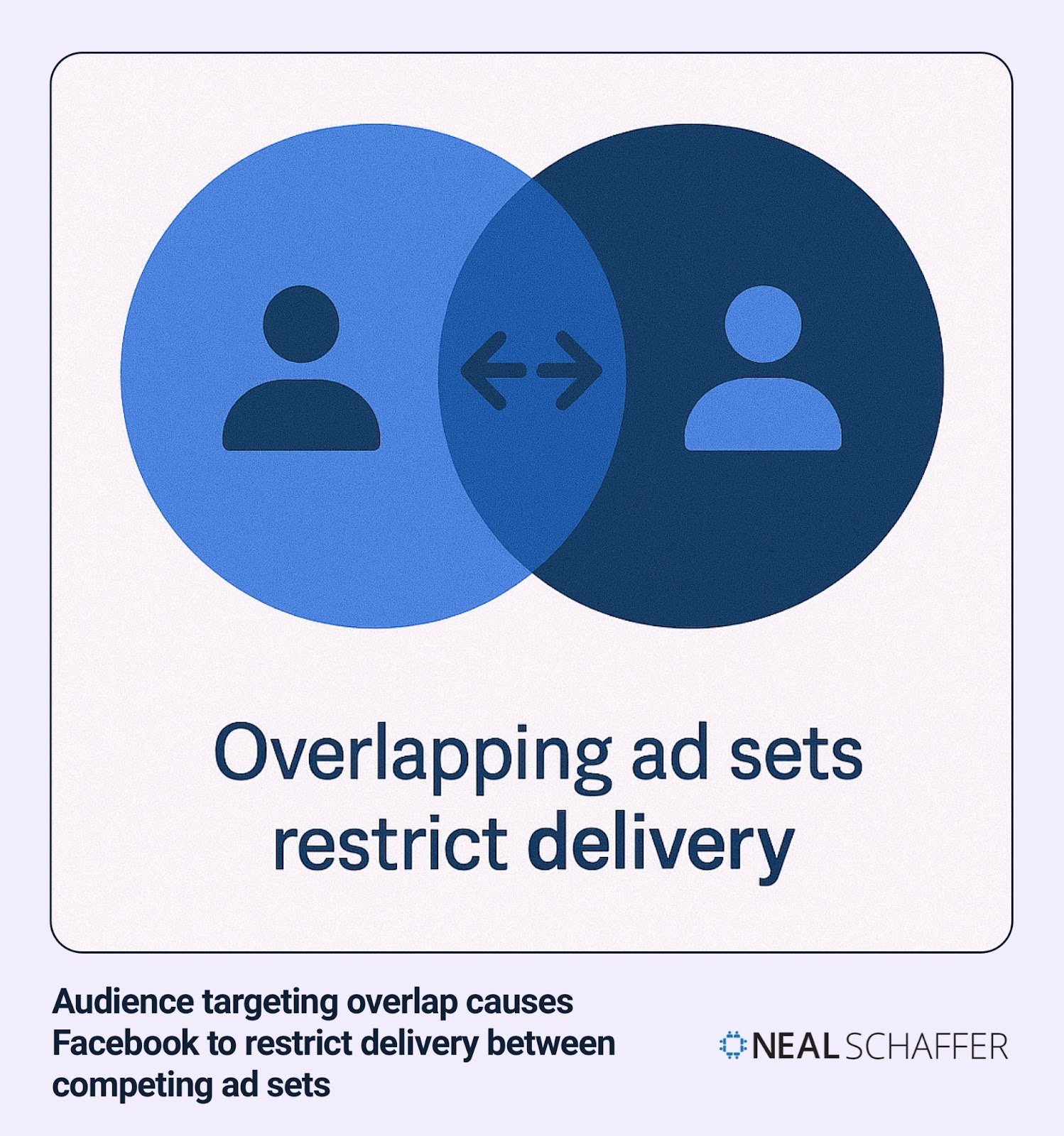
Audience targeting overlap issues are flagged as a key performance hurdle that can lead to delivery problems. When multiple ad sets compete for the same audience, Facebook’s system restricts delivery to avoid showing the same person too many ads from your business.
Budget allocation issues represent another common optimization problem. Facebook’s delivery system works best when it has sufficient budget flexibility to find and reach your ideal audience. Excessive campaign fragmentation through too many ad sets with small budgets can restrict the system’s ability to optimize effectively.
How Facebook’s Automated Systems Affect Delivery
Facebook’s machine learning plays an increasingly important role in ad delivery. Understanding how these automated systems work is crucial for troubleshooting delivery issues:
| Automated System | Function | Delivery Impact | Advertiser Controls |
|---|
| Low-CTR Ad Pausing | Automatically reduces delivery of underperforming ads | High | Limited |
| Learning Phase Algorithm | Collects performance data to optimize delivery | Medium | Indirect (through stability) |
| Budget Pacing | Distributes budget across time period | Medium | Direct (budget controls) |
| Audience Expansion | Finds similar users beyond defined audience | Low-Medium | Direct (toggle on/off) |
Meta’s systems now pause low-click-through-rate (CTR) ads faster than in previous years, though exact thresholds aren’t publicly specified.
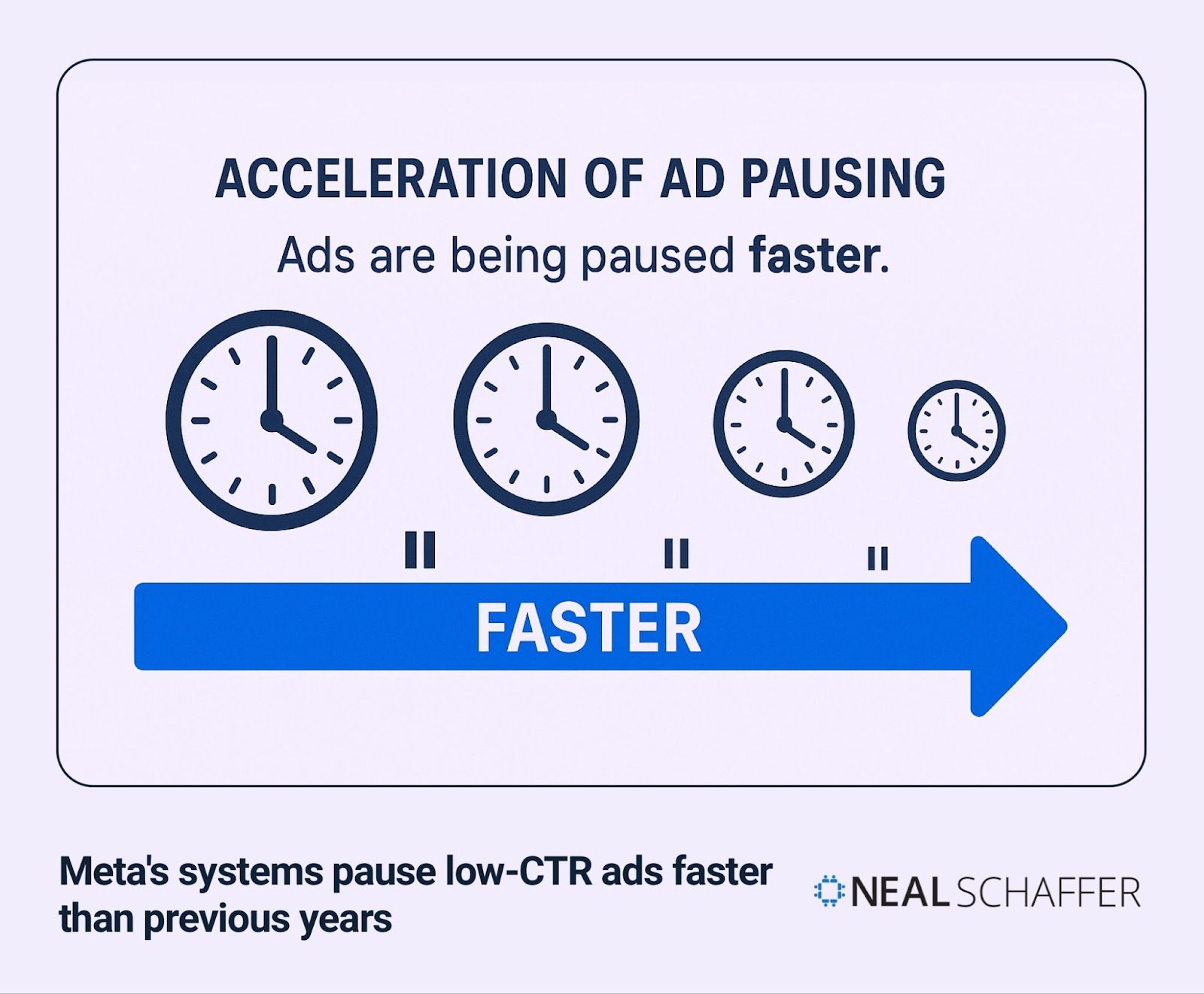
The learning phase is a particularly critical period for new campaigns. During this time, Facebook’s algorithm is gathering data to optimize delivery. Making changes during this phase forces the system to restart its learning, potentially extending delivery issues.
Signs your ad is stuck in the learning phase include:
- Inconsistent daily results – Wide performance swings from day to day
- “Learning” status – Persistent learning label in Ads Manager
- Limited reach – Delivery to only a small portion of your audience
- Higher than expected costs – CPMs and CPCs higher than account averages
Understanding typical costs for Facebook ads in your industry can help you identify when optimization issues are affecting your campaign’s performance and delivery.
Diagnosing Why Your Facebook Ads Aren’t Delivering
When faced with delivery issues, a systematic diagnostic approach helps identify the root cause quickly. The following process will guide you through a comprehensive troubleshooting sequence.
Start by checking your Ad Manager dashboard for obvious status indicators. Facebook generally provides status labels that offer initial clues about delivery issues:
| Status Indicator | What It Means | First Action to Take | Typical Resolution Time |
|---|
| In Review | Still undergoing policy review | Wait (normal process) | 24 hours |
| Rejected | Policy violation identified | Review policy details and edit | 24-72 hours |
| Not Delivering | Approved but not reaching audience | Check audience/budget/bid | 1-24 hours |
| Error | Technical issue preventing delivery | Check technical setup | Variable |
After checking status indicators, follow this step-by-step diagnostic process:
- Verify account status – Check for any account restrictions or payment issues
- Review ad rejection notices – Read any policy notifications carefully for specific guidance
- Examine campaign settings – Confirm your campaign objective matches your goals
- Analyze audience parameters – Check for audience size issues (too small or too large)
- Inspect technical elements – Verify pixel implementation, tracking, and feed quality
This sequential approach helps isolate the problem area efficiently. Once identified, you can apply the specific solutions outlined in the next section.
Proven Solutions to Fix Facebook Ads Not Delivering
Now that we’ve covered the main causes of delivery issues, let’s explore practical solutions for each category. These fixes are based on Meta’s official recommendations and real-world experience working with businesses facing delivery challenges.
For account-level issues, implementing secondary payment method verification has been shown to reduce payment-related pauses significantly.
Here are targeted solutions for each category of delivery problems:
Account-Level Solutions
When facing account issues, take these steps:
- Update payment methods – Add a backup payment option and verify primary method is current
- Appeal account restrictions – Use the Account Quality dashboard to submit appeals for any restrictions
- Adjust spending limits – Review and increase account spending limits if they’re restricting delivery
- Verify business information – Ensure your business verification is complete and up-to-date
These account-level fixes address the foundation of your advertising capabilities. Without a properly functioning account, even the best-designed campaigns will fail to deliver.
Understanding how a comprehensive Facebook marketing strategy works can help place these account fixes in the proper context of your overall social media approach.
Policy Compliance Solutions
For policy-related delivery issues:
First, carefully review the specific policy cited in the rejection notice. Facebook typically provides a link to the relevant policy section, which contains valuable guidance for resolving the issue.
Next, make targeted adjustments based on the specific violation:
| Policy Issue | Adjustment Strategy | Best Practice | Resubmission Approach |
|---|
| Text-Heavy Images | Reduce text overlay on images | Keep text under 20% of image area | Submit new ad version |
| Personal Attributes | Rephrase to remove direct implications | Focus on solutions, not problems | Edit rejected ad |
| Prohibited Content | Remove or replace prohibited elements | Review category-specific guidelines | Create entirely new ad |
| Landing Page Issues | Align landing page with ad promise | Ensure consistent messaging | Fix landing page, then resubmit |
Regular policy compliance checks help avoid account restrictions over time, making them a valuable preventative measure.
Technical Issue Solutions
For technical delivery problems:
Product feed issues require systematic troubleshooting:
- Run the built-in diagnostics tool in Commerce Manager
- Address any errors flagged in the order they appear
- Verify all required fields are present and properly formatted
- Check that product images meet Facebook’s size and quality requirements
- Test your product URLs manually to ensure they resolve properly
For pixel and tracking issues, use Facebook’s Pixel Helper browser extension to identify implementation problems. Common fixes include removing duplicate pixel events, correcting event parameters, and ensuring your pixel fires on all relevant pages.
When dealing with how do Facebook and Instagram ad setups differ in terms of technical requirements? Understanding these distinctions can prevent cross-platform technical issues.
Optimization Solutions
To address optimization-related delivery problems:
First, evaluate audience overlap issues. Use Facebook’s Audience Overlap tool to identify when multiple ad sets are targeting the same users. Consider consolidating overlapping ad sets or using the Campaign Budget Optimization feature to let Facebook manage distribution.
For learning phase issues, maintain campaign stability:
Avoid making changes to ads or ad sets during the learning phase. Even small adjustments restart the learning process, extending the time before your campaign reaches optimal performance. Instead, let campaigns collect at least 50 optimization events before making any adjustments.
For budget allocation issues, consider these strategies:
Rather than creating many small ad sets, consolidate into fewer sets with larger budgets. This gives Facebook’s algorithm more flexibility to find the best opportunities. A good rule of thumb is to ensure each ad set has at least 5 times your target cost per optimization event as its daily budget.
Implementing these targeted solutions addresses the specific root causes of delivery issues rather than making unfocused changes that might compound the problem.
Proactive Strategies to Prevent Delivery Issues
While troubleshooting is important, preventing delivery issues is even better. These proactive strategies can help minimize interruptions to your Facebook advertising.
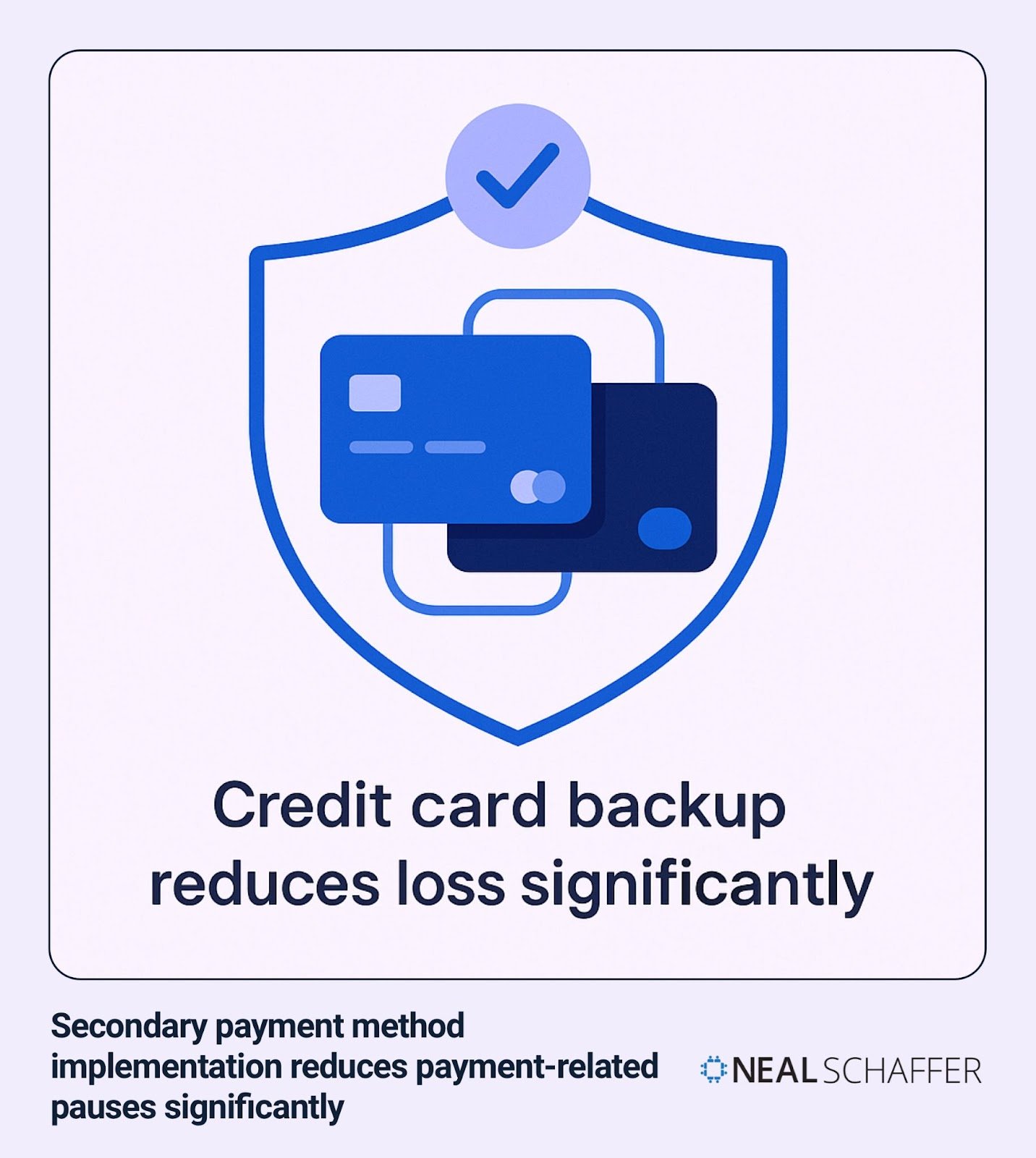
First, implement account safeguards:
- Maintain multiple payment methods – Keep at least two valid payment options on file
- Set calendar reminders – Track credit card expiration dates to update before they expire
- Regular account reviews – Check the Account Quality section monthly for potential issues
Second, establish a policy compliance system:
Create an internal ad review checklist based on Facebook’s policies. This pre-review can catch potential violations before submitting to Facebook, saving time and maintaining account health. For businesses in regulated industries, consider having legal review all ad content before submission.
Third, implement technical monitoring:
Schedule regular technical audits of your pixel implementation, event tracking, and product feeds. Many delivery issues develop gradually as technical debt accumulates in your setup. Catching these issues early prevents sudden delivery problems.
Finally, adopt optimization best practices:
Rather than creating entirely new campaigns for each promotion, consider using existing campaigns with proven delivery history when possible. This leverages the accumulated learning and stability of established ad sets. When creating new campaigns, allow sufficient time for the learning phase before expecting optimal performance.
Understanding how to properly measure Facebook ad effectiveness enables you to identify potential delivery issues early through performance indicators before they cause complete stoppages.

Conclusion
Facebook ad delivery issues can be frustrating, but they’re rarely insurmountable. By systematically identifying whether your problem stems from account issues, policy violations, technical errors, or optimization failures, you can apply targeted solutions that address the root cause.
The key takeaways from this guide include:
Account health forms the foundation of successful ad delivery. Regular maintenance of payment methods and account compliance prevents the most disruptive delivery issues.
Policy compliance requires ongoing attention as Meta’s enforcement systems continue to evolve. Understanding both the letter and spirit of Facebook’s advertising policies helps maintain smooth delivery.
Technical implementation issues often lurk beneath the surface of delivery problems. Regular audits of your tracking and data feeds prevent these technical issues from accumulating.
Optimization strategies should prioritize giving Facebook’s systems the flexibility and stability they need to learn and deliver effectively. Patience during the learning phase pays dividends in sustained delivery and performance.
By approaching Facebook ad delivery issues methodically, you transform what seems like a black box into a manageable system with clear rules and solutions. This systematic approach not only resolves current delivery problems but builds the foundation for more reliable advertising performance in the future.
Actionable advice for your digital / content / influencer / social media marketing.
Join 13,000+ smart professionals who subscribe to my regular updates.